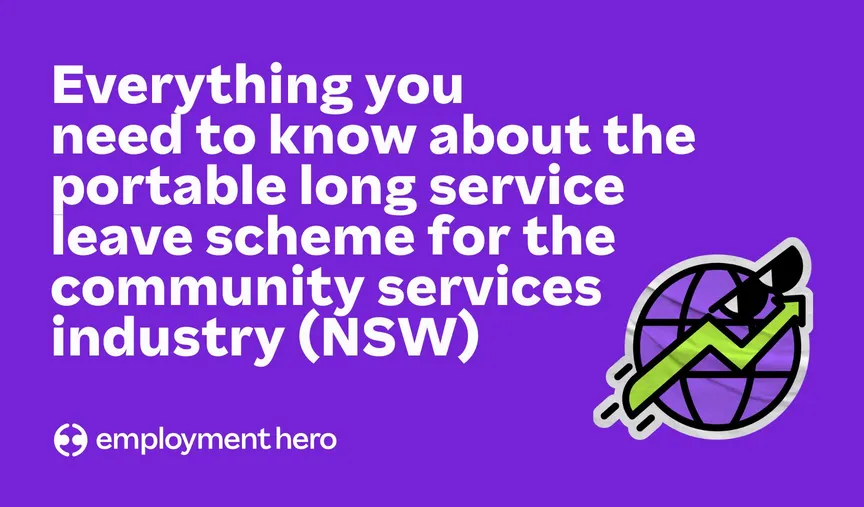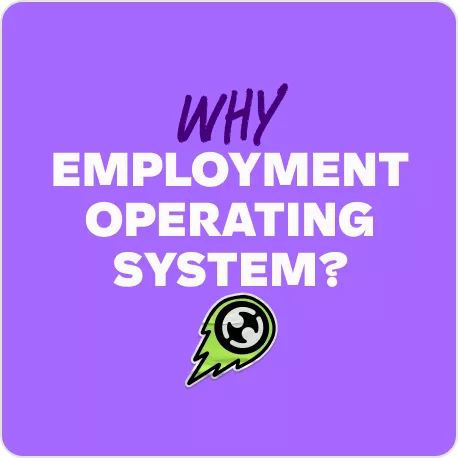Ultimate Guide to Workplace Policies and Procedures [2025]
A well-written and clearly communicated policy helps set clear expectations around employee behaviour and workplace procedures. Let’s see how to write one for your business.

Contents
Workplace policies shouldn’t be mysterious documents that wither away on dusty shelves – instead, they’re dynamic tools that articulate your organisation’s values, culture, systems and processes.
These policies and procedures help to framework your organisation’s expectations around your employee’s behaviour.
If you’re wondering whether you need clearly defined workplace policies in your business, the answer is a definite ‘yes’.
But first, let’s look at what workplace policies and procedures are.
What is a workplace policy and how do I write one?
A workplace policy is a statement which outlines an organisation’s practices and procedures concerning part of its business, which can cover everything from day-to-day operational matters to compliance with employment legislation.
Policies and procedures in the workplace play an important role in expressing an organisation’s values and establishing a positive and productive organisational culture.
Well-written and clearly communicated company policies help set clear expectations around employee behaviour and workplace procedures, which means everyone can get on with business. Workplace policies also safeguard an organisation from risk.
According to Employment Hero’s HR Compliance white paper, implementing workplace policies will “protect your business from a range of situations, whether it’s social media, inappropriate computer use, discrimination or harassment.”
“If you don’t have a policy, then it’s very difficult to defend certain claims that might be brought by an employee,” says Simon Obee, Head of Legal and Professional Services at Employment Hero.
Why should you have workplace policies and procedures?
It can be really frustrating and downright time-consuming to try and keep up with all the legislation and compliance updates coming your way. Maybe you love them, maybe you hate them, but one thing’s for sure, you can’t live without them.
So, why do we have policies and procedures in the workplace?
Policies and procedures in the workplace are an essential component of people management for any business. Firstly, they outline operating procedures and processes. Workplace policies also help articulate an organisation’s mission and values and set the standard for employee behaviour and performance.
The importance of workplace policies and procedures
Another question you may be asking is what is the importance of policies and procedures in the workplace? Workplace policies and procedures help to provide a decision-making framework to ensure integrity and fairness are adhered to when issues arise. As well as help minimise legal and safety risks for you and your business.
But remember, policies and procedures aren’t interchangeable.
Workplace policies communicate the connection between a business’ vision and values and its day-to-day operations.
An example of this would be a health and safety policy that aims to reduce fire hazards by not allowing flammable or combustible substances on company property.
Workplace procedures explain specific action plans for employees when carrying out a policy. Workplace procedures are important because they tell your employees how to deal with a situation and when.
An example of health and safety procedures would be in the event of a building fire, how employees should evacuate from the premises safely.
How can you ensure employees adhere to policies and procedures?
Updating and reviewing policies and procedures in the workplace is key to their success.
Therefore regular training sessions with your employees are important to inform and remind them of operational procedures so that they can stay on track.
As a business, you could consider updating your policies and procedures even when you introduce things like new software or are noticing increased levels of stress in the workplace.
Employees who are up to date with their policies and procedures can lead to stronger relationships in the workplace and a better public reputation for your business.
Workplace policy examples
The types of workplace policies that a business requires vary between industries, but here is a list of common organisational policies:
- Code of conduct
- Recruitment policy
- Internet and email policy
- Mobile phone policy
- Non-smoking policy
- Drug and alcohol policy
- Health and safety policy
- Anti-discrimination policy
- Anti-harassment policy
- Grievance handling policy
- Discipline and termination policy
- Social media policy
- Attendance policies
When developing policies, make sure to provide an overview of the policy first, then describe how it operates. It may also be helpful to provide examples of the policy in action. Finally, include a section that details how the policy interacts with your other policies and procedures.
Effective and compliant workplace policies can protect a business if disgruntled employees bring a claim against the company. They also help foster a safe workplace by providing employees with options for reporting issues that may arise.
Tips for writing company policies
The NSW Government Industrial Relations website provides some useful tips for creating workplace policies. It advises ensuring that a policy has the support of management and, where appropriate, consulting with staff in its development and implementation to help encourage buy-in and compliance.
1. Clearly define policy terms
A workplace policy should state its purpose and define key terms to avoid any ambiguity if a breach is made. The document should use clear, easy-to-understand language that is free from jargon. The policy should make clear to who it applies, what is acceptable and what is unacceptable.
Also included should be consequences of non-compliance. It should additionally include a mechanism for reporting issues and comply with the National Employment Standards and other relevant legislation or employment law.
2. Ensure employees understand company policies
It’s not enough to write a workplace policy and file it under ‘done’. A workplace policy requires a proper implementation to be effective, which means making sure staff are aware of the policy and its implications.
Training in workplace policies should be a mandatory part of the onboarding process, and copies of the policies should be stored in easy-to-find locations.
3. Use a workplace policy checklist
Employment Hero’s HR Compliance white paper sets out a simple five-step policy checklist for employers:
- Clearly explain the conduct expected of employees, and the consequences of breaching policies.
- Ensure all employees have easy access to your workplace policies.
- Regularly audit workplace policies to keep them up to date with relevant laws and other protocol in your company.
- As part of your onboarding program, ensure all new hires review their awareness and understanding of your workplace policies.
- Where appropriate, conduct regular training on appropriate workplace behaviour.
4. Use resources provided by local legislation offices
The Australian Government Business website offers some other helpful advice to business owners who need to draft policies and procedures for their workplace. It states that by having policies and processes in place, your company can maintain standards and values that match your mission statement.
This is a vital part of improving the way your customers and staff interact with your overall business operations.
It is important that you:
- Identify key processes and tasks and develop standard operating procedures (SOPs) for them.
- Allow staff to contribute to the content and regularly review all processes.
- Make sure all policies are well-documented and accessible.
- Make first-aid and emergency exit procedures clearly visible.
- Communicate all policies with staff, detailing why they are important.
- Educate staff on procedures relevant to their role.
You can find more information about business policies, procedures and processes via the Business Queensland website. You should consider the following types of policies in the workplace:
- Selling goods and services
- Customer service
- Managing stress and mental health
- Conflict of interest
- Workplace health and safety
- What to do in an emergency
- Recruitment
Employment Hero offers a range of workplace policy resources including contracts and templates. Click here to request a demo today to learn more.
Examples of workplace policies and procedures in court
Having a code of conduct or workplace policy won’t automatically protect an organisation from an unfair dismissal case if an employee is fired. Workplace policies must be enforced appropriately.
In cases of disciplinary action and termination of employment, the punishment must fit the crime.
Here are some real-world examples that highlight how important it is to make sure policies and conflict management procedures in the workplace are fair, in line with the law, and appropriately enforced.
Procedural fairness
It’s essential to stick to the policy and enforce it reasonably and fairly. The Fair Work Commission found that a cabinetry and hardware importer in Melbourne had unfairly fired one of its employees.
This employee had been running her ‘side hustle’ – a scented candle company – while she was at work. The sales associate was fired without warning, with no opportunity to respond to her dismissal.
The commissioner found that in the absence of serious misconduct, a written warning would have been more appropriate. The business subsequently agreed to reinstate the woman’s employment. Adhering to procedural fairness can protect an employer from legal liabilities.
Procedural fairness applies to employers too
In 2017, a Bechtel Constructions worker was sitting with colleagues in the construction site’s mess hall. Another man, unknown to the worker, stole the cowboy hat he was wearing from his head.
An altercation ensued, and the man who took the hat was summarily dismissed for punching his opponent in the face. The cowboy hat-wearing worker, who had ‘chest-bumped’ the aggressor, was also fired for serious misconduct after his employer found his actions had breached the company’s code of conduct.
This code of conduct required staff to avoid engaging in violent or anti-social behaviour at all times. When the worker appealed the decision, the Fair Work Commission upheld his dismissal, finding that the incident constituted serious misconduct and that the business had correctly followed procedures.
Legislation vs Workplace policy
Relevant workplace laws take precedence over workplace policy. If an employee commits an act that is in breach of their employer’s code of conduct, but is protected under law, there are grounds for an unfair dismissal claim.
A number of high-profile cases illustrate this issue. A marine scientist who was sacked for making disparaging comments about his workmates and employer, James Cook University, won an appeal for unfair dismissal.
The court found that laws protecting intellectual freedom took precedence over the University’s code of conduct.
Angela Williamson launched a legal challenge against Cricket Australia after she was sacked for writing a series of critical tweets about the Tasmanian government and its abortion policy.
Williamson claimed that she was fired for expressing a political opinion – not a sackable offence. After making national headlines, the matter was eventually settled out of court.
The wrap up
As these high-profile case studies show, it pays to make sure your business’s workplace policies and procedures are up to scratch.
Our digital employee management software offers a range of workplace policy resources including contracts and templates. Our in-house employment lawyers keep all of this up to date so you can focus on what matters. Request a demo today to learn more.
Related Resources
-
 Read more: NSW Government introduces Portable Long Service Scheme for the Community Services Industry
Read more: NSW Government introduces Portable Long Service Scheme for the Community Services IndustryNSW Government introduces Portable Long Service Scheme for the Community Services Industry
The NSW Government has introduced portable long service leave for the community services industry. Learn what it is and what…
-
 Read more: Payday Super changes: What we’re fighting to fix and why it matters to you
Read more: Payday Super changes: What we’re fighting to fix and why it matters to youPayday Super changes: What we’re fighting to fix and why it matters to you
Big changes are coming to how superannuation is paid in Australia. Here’s what we’re asking Treasury to seriously consider updating…
-
 Read more: Why choice in superannuation matters
Read more: Why choice in superannuation mattersWhy choice in superannuation matters
What could be coming when Payday Super hits and what Employment Hero is doing about it.











